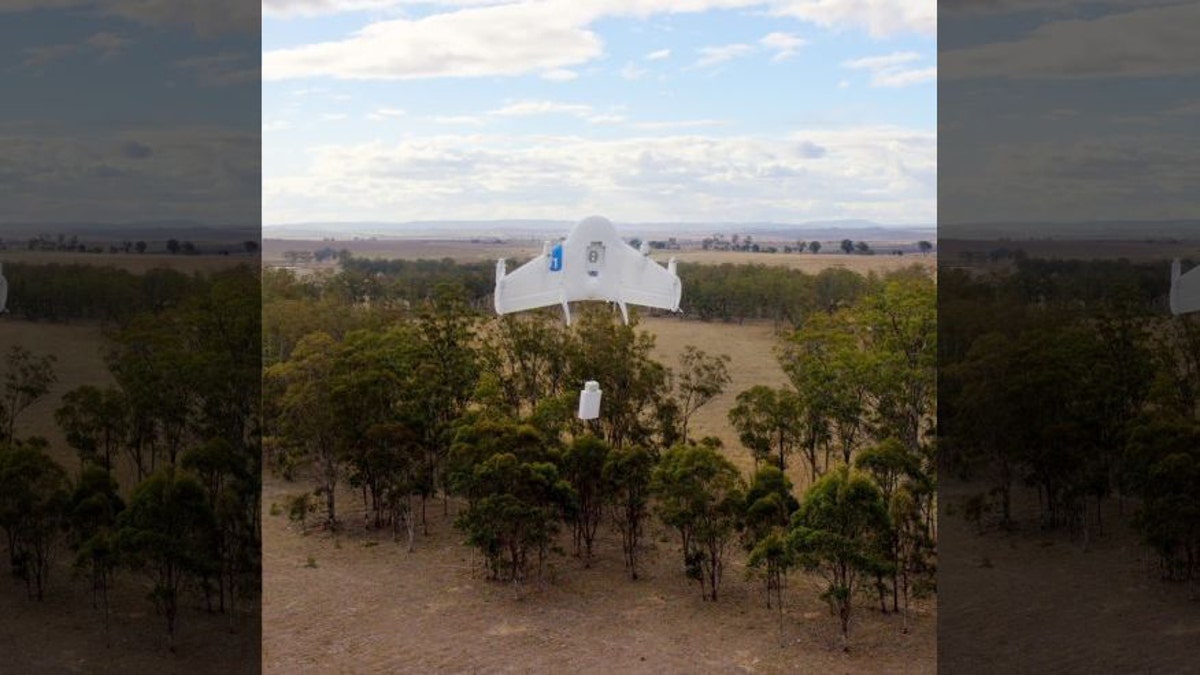
(Google)
The pieces of Google's Project Wing drone delivery service are slowly coming together.
A patent published Tuesday by the U.S. Patent and Copyright Office describes a "delivery receptacle" used to move a package from a drone to the delivery location.
Flying drones use infrared (IR) beacons to connect with and navigate to the container on the ground. Once the package is deposited, the delivery receptacle moves it to a secure location, "such as into a garage," the patent said.
No further details were revealed, and Google declined to comment to PCMag.
The experimental Google X division in August 2014 unveiled Project Wing—the company's answer to drone-delivery services from rivals like Amazon (pictured) and Walmart. Described at the time as "a delivery system that uses self-flying vehicles," early tests successfully delivered a first aid kit, candy bars, dog treats, and water to Australian farmers.
In November, division leader David Vos said he wants delivery drones in the air by 2017. Google is working with the FAA to set up an "air traffic control system for drones" flying under 500 feet, something NASA and Verizon are also reportedly exploring.
While the drone market is set to expand in the coming years, questions abound over how and when that will happen. Part of the problem is that the FAA is still working on final regulations that will govern how drones will be controlled.
Outside of the U.S., however, drone supervision appears slightly more lax: Researchers at the German Aerospace Center recently landed a small UAV on the roof of a car while both vehicles were traveling at 47 mph. This technique—basically eliminating landing gear—could be applied in the event of a disaster or during adverse weather conditions, according the Germans.
Editor's Note: This story was updated on Jan. 28 with a response from Google.
This article originally appeared on PCMag.com.
